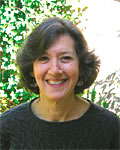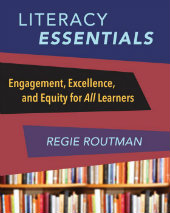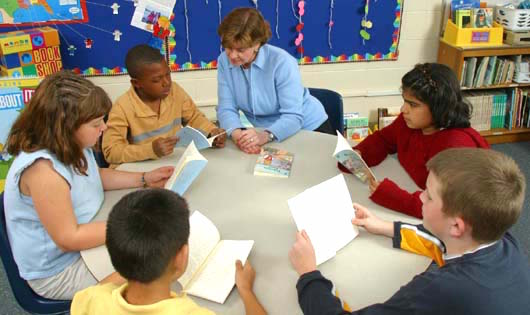Rethinking Guided Reading to Advantage ALL Our Learners

No teacher deliberately sets out to disadvantage students and, yet, we unintentionally do so all the time.
Students do not become self-directed, joyful readers because teachers and administrators prioritize daily, guided reading groups. Students become readers, in every positive sense of that word, when most of their reading time is dedicated to uninterrupted, voluminous reading of texts they can and want to read.
Guided reading is and always has been a means to an end — readers who love to read for pleasure, information, enrichment, life fulfillment, and their own personal goals.
Only when we develop common beliefs that align with research-based, principled practices can we effectively apply guided reading – or any instructional construct – to benefit all learners. Since a vast majority of students in the U.S. are ability grouped for “guided reading,” we need to be clear on our purposes, principles, and practices.
Expanding our view of guided reading
The commonly held, narrow definition of guided reading relies on meeting with a small group of students at a similar reading level and guiding them through a manageable text. Consider instead relying on a more expansive view of guided reading:
Guided reading is any learning context in which the teacher guides one or more students through some aspect of the reading process: choosing books, making sense of text, decoding and defining words, reading fluently, monitoring one’s comprehension, determining the author’s purpose, and so on. In guided reading, the teacher builds on students’ strengths and supports and demonstrates whatever is necessary to move the child toward independence. (Routman, Reading Essentials, 2003, p. 151 and Literacy Essentials, 2018)
This broader definition means, for example, that using a nonfiction text in a content area or meeting with a student in a one-on-one reading conference can be a guided reading lesson. Keep in mind that guided reading is a temporary scaffold to assist students to become self-regulating, self-reliant readers.
In guided reading students are expected to try-and-apply with our guidance the solid instructional skills and strategies of proficient readers that we’ve been explicitly teaching and practicing every day with them, across the curriculum through multiple contexts — thinking aloud, demonstrations, shared reading, shared writing, and small group work. Very important at this stage, the student assumes responsibility for most of the reading work.
Rethinking Guided Reading:
4 Crucial Considerations
EQUITY Issues
► Low-income students are most often placed in the lowest groups and are most likely to remain there, limiting their achievement as readers. (See this recent research.) Keeping low income students in low performing groups belies the belief that all children can learn and, instead, continues the pernicious poverty of low expectations that limits and slows students’ reading growth, sometimes for their entire school careers.
I have no issues with “ability” grouping early on, mostly in grade 1 and early grade 2, just until students can read pretty well on their own — as long as the vast majority of daily reading opportunities are inclusive for all students. To achieve a positive outcome for every reader, flexible grouping based on learning needs is a necessity, as is ensuring equal access to quality content.
► “Low” reading groups often focus on low-level skills and over rely on levels and labels (by kids, teachers, parents, librarians). Prioritizing skills and word work in isolation is common while teaching a repertoire of high level thinking tools and engaging with high quality literature are rare.
PROFESSIONAL LEARNING Issues
► Overreliance on commercial reading programs shortchanges students and teachers. While we all need a comprehensive framework for teaching, scripted programs and rigid lesson plans have proven to be detrimental to teaching for deep understanding.
It was my professional, intensive educational training and experience as a Reading Recovery teacher that finally made me a competent reading teacher. Until that time, I taught reading almost exclusively through decoding and skills in isolation. Reading Recovery moved me beyond the ongoing code-based vs. meaning-based debates to an integrated, personalized approach that incorporates explicit instruction in word work and comprehension as part of reading all texts. Ongoing professional learning is a necessity for us all!
► You can’t teach reading well if you are not a reader. As an avid reader of fiction and nonfiction, I apply multiple strategies interactively in an effort to deeply understand a text. For example, I infer, summarize, figure out meaning from surrounding context and visuals, and link prior knowledge to new learning. I teach what I do as a competent reader – and writer – through demonstrations, thinking aloud, shared reading, shared writing, and much more. Professional reading – books, articles, research, blogs – continue to inform how I think, read, teach, and lead.
 READING Issues
READING Issues
► The focus in guided reading tends to be on teaching reading, rather than on teaching readers. That is, the instructional focus is often on decontextualized skills and strategies in isolation, which has not been proven to transfer to increased comprehension in reading texts. Also, once students can read fluently, almost all their reading is silent and the teacher is checking for understanding and supporting as needed when meaning breaks down.
► Over relying on a designated reading level for book selection is common. Even when done thoughtfully, leveling books is a subjective process, not a scientific one. Levels by themselves do not typically take into consideration students’ interests, background knowledge, and cultural relevance of the texts — all of which impact how easy or difficult it will be to comprehend a book. A book we think might work well with a group may prove to be a poor fit. For perspectives on leveling see my recent MiddleWeb article.
► Too often the teacher is doing most of the work, often because the selected guided reading book is too hard and students are unable to read 95% of the words so they can focus on meaning. If we look again at the Optimal Learning Model in the graphic above, we see that in the guided practice stage, the student is now in charge of the learning process, not the teacher. At this stage, we are mostly supporting students so they can self-monitor, self-correct, and self-direct themselves when they are reading on their own.
► Sufficient sensitivity to readers who struggle can be lacking. I am not a fan of “walk-to-reading”—with large, ability-grouped classrooms—or of any groupings which stigmatize students. I believe the knowledgeable classroom teacher needs to assume the main responsibility for guided reading because s/he knows her/his students best—their preferences, interests, needs, background, and goals.
Think about creating more flexible, needs-based groups established on more than levels. As an example, offer an invitation to any students who want to learn more about, for example, figuring out multi-syllable words or revising prior knowledge based on new information in the text. Then invite any student who has not volunteered, but who you know would benefit, to join the group. In my experience, that equitable scenario almost always works beautifully.
MANAGEMENT Issues
► Students are expected to engage in and independently complete various activities, “seat work”, and/or work at various ”stations” while the teacher is fitting in multiple groups each day and is not available for guidance. How these assigned tasks increase readers’ competence is rarely assessed so is largely unknown. As well, even though it may be unintentional, managing the management system often winds up taking priority over effective instruction and time for reading, not to mention the enormous amount of time teachers spend planning for management. Sometimes, when teachers are not sufficiently knowledgeable, the management system even becomes the reading curriculum.
This management focus is particularly egregious in kindergarten, where it’s unrealistic to expect five year olds to work on tasks on their own for extended periods of time while the teacher is “getting in” all her groups. More importantly, we are depriving young children of play and exploration that is necessary for their optimal development.
► Guided reading groups tend to go on too long, most often for 20-30 minutes. Time is tied to purpose. For example, If we see guided reading as the supportive event, then 10-15 minutes is enough time to affirm, support, and explicitly teach what’s most needed at this time so most of students’ reading time is spent on the main event—deliberate, uninterrupted practice time, independently reading to understand for pleasure and information. Use your guided reading time wisely. Avoid potential time wasters — for example, whisper reading and/or oral reading for middle school students who are readers.
Self-Evaluate and Take Action
Do all you can to ensure your – and your school’s and district’s – current implementation of guided reading aligns with research, principled practices, and common sense and also that applied practices are fair and equitable to all students. Review the bulleted headings in this article, self-evaluate, and take action to ensure we are equipping all students with the high level thinking tools they need to become efficient, effective readers.
Finally, while we might pride ourselves on having excellent guided reading groups, we could still fail in developing students who are engaged, inquisitive, comprehending readers. Until we prioritize daily choice, access, and sustained time to read interesting texts as the mainstay of any reading program, our students will not become self-sustaining, joyful readers.
(For additional, specific suggestions regarding guided reading, see Literacy Essentials: Engagement, Excellence, and Equity for All Learners. (Routman, 2018, pp. 219-222.)
______________________________________________






































Thank you, Regie, for making these important points about guided reading. I plan on sharing your article with my faculty.
Interesting read. It’s definitely making me think more deeply about guided reading. Do you have any suggestions for the management issue of students completing independent activities?
First, ask yourself: “How is this activity helping students learn more, gain competence as a reader and writer, and how will I know?” “Is what I’m asking students to do worthy of their time and talents?” My favorite independent reading activity is more reading: reading on in guided reading book, reading with a partner, reading a self-chosen book, listening to an audiobook. Management in completing independent activities is rarely an issue if students value what we’re asking them to do, the task is meaningful and relevant, they have some choice in the matter, and we have demonstrated and practiced with them what’s expected until we’re clear they can read/write/work independently.
Thank you. This is a powerful article and I will be sharing it with the teachers I have the pleasure of working alongside. I found myself nodding along as I read and as I finished I wanted to shout AMEN! It can be so difficult for teachers to let go of centers and allow children to just be with books of choice. In reading workshop my students were readers, reading books, that’s it, no more! I didn’t spend my time creating center activities. I spent my time combing blogs, booklist, and book trailers looking for books that would leave my readers aching to read and it worked! Students read; I taught, I demonstrated and guided strategies, students practiced and they became happy, motivated readers with TBR lists, favorite authors, and a desire for more! Thank you for sharing these powerful words with us!
Deb, You sound like a very thoughtful and knowledgeable teacher, which I already know from your blog, Two Writing Teachers. Bravo! One of the issues I always had with centers is how much time they take to create, set up, and manage. To my mind, it’s much easier for all involved to simplify and keep our focus on the main event–reading, in all the ways you cite.
It’s been exciting to see all the interest and questions around guided reading in kindergarten. Just the fact that so many of you are questioning a practice that often doesn’t make a lot of sense for these little ones is encouraging. If we keep engagement, excellence, and equity at the forefront of what we do–regardless of the age of our students or content are we teach, we will know what to do–or to at least find out what else we might do that truly benefits all our students.
What do You think about reporting reading levels on report cards per quarter? Third grade teacher.
One of my instructors of reading and writing is iconic master teacher Augusta Mann, who has said that Reading/Writing Units of Study are less than desirable as a major method of literacy instruction. (Her skills are pretty solid, having been an effective teacher in Harlem beginning in 1961. Her years of working with literacy initiatives, including the Center for Applied Cultural Studies and Educational Achievement (CACSEA) and the National Urban Alliance, further supports her credentials.)
My belief is that she is correct. Additionally, I believe that there are a great many internal cultural biases that are built into the rugged individualism style that Teachers College’s RUOS and WUOS are reliant on.
Many cultures learn more effectively in more social groups using entirely different teaching methods. Consider, for example, how various populations teach their children religious literacy. They don’t all sit in chairs reading their holy books in various reading levels. Why is that? Cultural learning methods are different. It is an destructive assumption that students of all cultures learn the same “rugged individualist” style, and that many are poorly served by the current dominating cultural norms of instruction. (Selection of culturally diverse books for a library are a modification to all reading programs that all methods are to do, so no, that is not part of this conversation.)
Rhythm, recitation and repetition are what Augusta Mann centered her instruction on. (The link will show you some demonstrations from some of her PDs she was contracted to give in a variety of school districts.)
I tend to agree with Augusta. Library modifications to culture notwithstanding, I believe that WUOS of ROUS are a less effective way to teach literacy to a significant number of cultures, as well as extremely biased in their approaches.
Granted, as a bi-cultural person, I tend to view this from a particular lens, but I was wondering what your opinions are.
@Lauri Boren – As a Staff Development and Curriculum Specialist in Central California (not with Teacher’s College), who works with schools and teachers with the WUoS and RUoS, I would have to respectfully disagree with your assertion of the “rugged individualism” approach of the WUoS and RUoS.
I know that you wanted a response from Regie, but I have attended several TC Institutes, read the Guides to the Reading and Writing Workshops as well as the unit books themselves, and have worked with Lucy Calkins and some of her staff developers on English Learner supports for California.
It is evident that building a literate community in the classroom is a hallmark of their approach that includes interactive read-alouds, shared reading, guided reading, small group reading, book clubs, as well as individualized conferring with responsive teaching. This is emphasized through the whole unit, including the celebrations at the end that bring the whole class together as a community to celebrate their growth and accomplishments. It’s not children sitting around in chairs reading leveled books all the time, as you described.
In addition, the new Phonics Units of Study are first taught in whole group and then partners practice their skills with each other. The lessons use rhyme, rhythm, and repetition through songs, chants, poems and even the children’s names themselves. I would highly recommend reading the Guides to the WUoS, RUoS, and PUoS to gain a better understanding and insight of their approach that has made dramatic differences in the growth and development of readers and writers here in Central California where I work. These schools include those with high populations of English Learners, students living below the poverty line, and one school that has a high population of special needs students.
Please provide the sources for that claim related to dramatic differences for COC and ELL populations. I assume there are links to your references.
Thank you,
Lauri Boren
I think there needs to be a balance. I have also worked with Augusta Mann in the inner city setting and I gained a lot of insight on the cultural differences. I love her strategies with recitation and movement. Over the years I have learned more about author studies, book talks, project-based learning, and most recently guided reading. I love the way guided reading is explicit and targeted…but I love the creativity and joy as well for my students. Both are necessary. It is our job to figure out what works for each child! :)
Thank you for this thoughtful article, Regie! I love this line the most:
“Guided reading is and always has been a means to an end — readers who love to read for pleasure, information, enrichment, life fulfillment, and their own personal goals.”
I also appreciate how you talked about expanding guided reading as helping students become avid readers, which in the end, is the goal of our work.
Regie,
I also write for MiddleWeb (The Unstoppable EL Teacher), and I host a podcast for teachers of language learners. Would you like to come on the podcast to share your ideas around expanding guided reading?
(Tancma at g mail dot com)